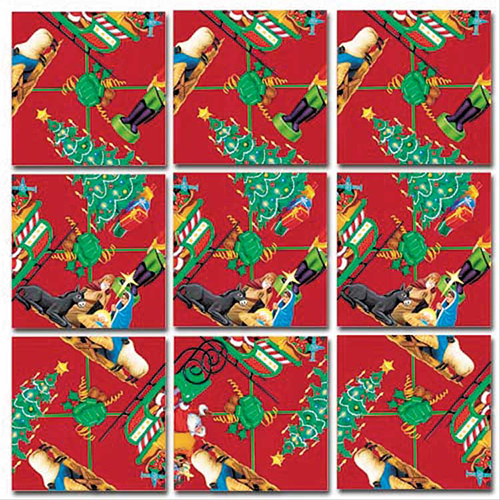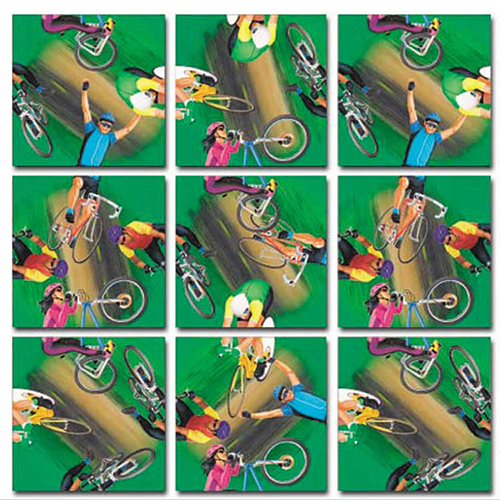Description
The traditional symbols of Christmas are colorfully illustrated on this wonderful and challenging stocking stuffer for persons of all ages!
Fascinating Facts
Christmas literally means Christ’s Mass, from the Latin Christes Masse. It is the religious festival celebrating the birth of Jesus of Nazareth, whom Christians believe to be the Messiah, the Christ, prophesied in the Old Testament. The date of December 25 was officially established for the observance of the birth of Christ by Julius I, Bishop of Rome in 350 AD, after Christianity had been embraced by Emperor Constantine I, the Great, as the official religion of the Holy Roman Empire.
Before Christianity had become the official religion of Rome, the Roman pagan feast of Saturnalia had been celebrated during the second half of December to honor the Roman god of agriculture, during which the Romans decorated their homes with greenery and over indulged themselves with lavish eating, drinking, social gatherings and even riots in the streets. Gregory of Nazianzus denounced the combining of such pagan traditions with the observance of Christmas before his death in 389 and asked that the observance be “after a heavenly and not an earthly manner.” Human nature persisted in incorporating pagan customs into the Christmas celebration, and, over the centuries, the Church incorporated into the accepted observance of Christmas the most civilized and beautiful aspects of these customs.
Christmas is believed to have been first celebrated in England in 521, when King Arthur celebrated his victorious battle of York, while minstrels entertained guests at his Round Table. St. Augustine came to England in 592, and on Christmas day in 598, more than ten thousand Britons were converted to Christianity. During his reign from 871 to 899, King Alfred, the Great, of England established twelve days of celebration in observance of Christmas. When Oliver Cromwell came into power in England in the 17th Century, the Puritans who supported him vehemently opposed the celebration of Christmas as being a heathen practice, and Cromwell’s Parliament banned the celebration of Christ’s Nativity and of all other religious festivals. With the restoration of the English monarchy under Charles II in 1660, the traditional celebrations of Christmas began to reappear, but in a much more subdued manner. In the Victorian era of the second half of the 19th Century, Charles Dickens memorialized and idealized the Christmas customs of “Merrie Olde England” for future generations in his novel, A Christmas Carol. The Victorian Christmas continues to this day to serve tradition as the idealized Christmas, replete with carolers, yule logs, feasts and expressions of goodwill shared by family and friends.
The concept of Santa Claus is derived from the life of Saint Nicholas, an early Christian bishop of Myra, in Asia Minor, whose remarkable elevation to Bishop while still in his childhood earned him the nickname the “Boy Bishop.” Because of his own young age and the love and generosity he gave to other children, St. Nicholas became closely associated with love for children and the concept of love for the Christ Child, celebrated at Christmas. Both Greece and Russia took Saint Nicholas as their patron saint, and more churches were named after him than any other saint. Dutch merchant sailors brought to Europe the first reports of Saint Nicholas’ generosity to children and began the tradition in Holland of giving presents to children on December 6, the Feast of St. Nicholas. The Latin name “Sanctus Nicolaus” became Sinter Klaas in Dutch. The Dutch brought their tradition of Sinter Klaas to New York when they first settled it as New Amsterdam, and the English influence on the Dutch Christmas parades in New York caused “Sinter Klaas” to become “Santa Claus.” In 1809, Washington Irving wrote of Saint Nicholas as a jolly, chubby fellow with a long Dutch pipe who rode across the sky in a sleigh drawn by reindeer. It was undoubtedly a vision of this short, chubby, rosy cheeked Dutchman of Washington Irving that inspired Dr. Clement C. Moore in 1822, when he wrote his poem, “A Visit From Saint Nicholas,” which began, ” ’Twas the night before Christmas…”





Reviews
There are no reviews yet.